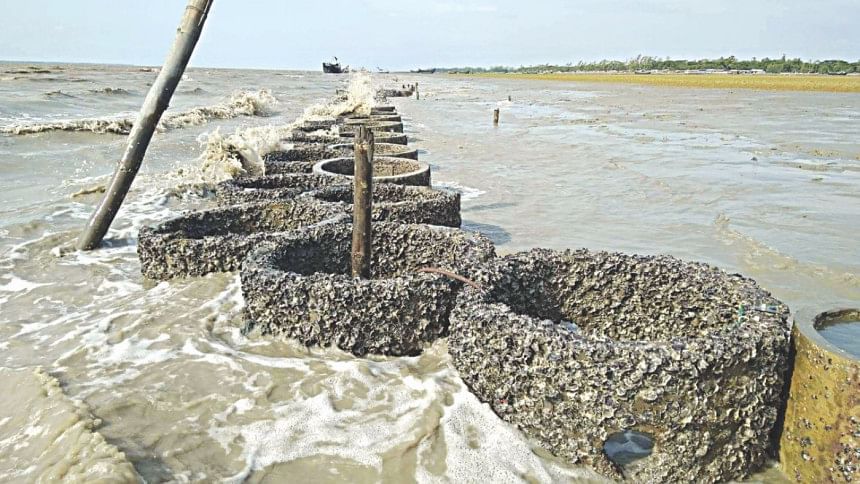Oyster the protector

Despite the construction of embankments and barriers in some areas, storms, strong currents and tides regularly wreak havoc on the Bangladeshi coastline.
In the struggle to combat erosion it now seems that a new force may be enlisted: the power of oysters. A recent study has found that along with providing a potential new food source, oyster farming can protect the coast.
“For many years Bangladesh has relied on conventional means of erosion prevention and protection from tidal floods. No sustainable, permanent method has been pursued,” explains Associate Professor Shah Nawaz Chowdhury from the Marine Science and Fisheries Institute at Chittagong University.
“We found that the reef structure of oyster beds can offer direct physical protection for embankments from high tides and waves, as well as promoting marine biodiversity. Once installed there would be no maintenance costs,” he said.
The study, which was jointly carried out by the university and a team from the Institute of Marine Resources and Ecosystem Studies at Wageningen University in the Netherlands, involved conducting trials at eighty locations from the Feni River estuary in the north to Saint Martin's Island to determine where conditions most favoured oyster colonies.
Subsequently a field experiment was completed at Boroghop jetty on Kutubdia Island in Cox's Bazar. There, the team divided a stretch of coastline into five twenty-metre test zones and proceeded to install concrete-ring oyster beds in three of the zones, with two left undisturbed to enable comparison.
Oyster colonies on the concrete rings flourished while the wave-dampening effect of the artificial reefs allowed for helpful sediment accretion behind the reefs. The team found that the oyster beds reduced damage to the coastal embankment by 56 percent over the period.
Moreover, the reef grew in height by two centimetres, suggesting that the oyster colonies could adapt to predicted sea level rises.
The oyster beds demonstrated other advantages too. Along with providing a sustainable food source and potential income, through oyster farming, for local communities, the artificial reefs offered safe habitat for at least 34 varieties of fish as well as 11 crab and 16 shrimp species.
The reefs can also stimulate mangrove growth along the coast which further benefits coastline protection.
“It is an interesting study,” says Aysha Akter, a professor from the civil engineering department of Chittagong University of Engineering and Technology.
“If the results of the computer-based numerical modelling and hydro-dynamic studies can be confirmed, oyster cultivation has the potential to combat climate change.”


 For all latest news, follow The Daily Star's Google News channel.
For all latest news, follow The Daily Star's Google News channel. 








Comments